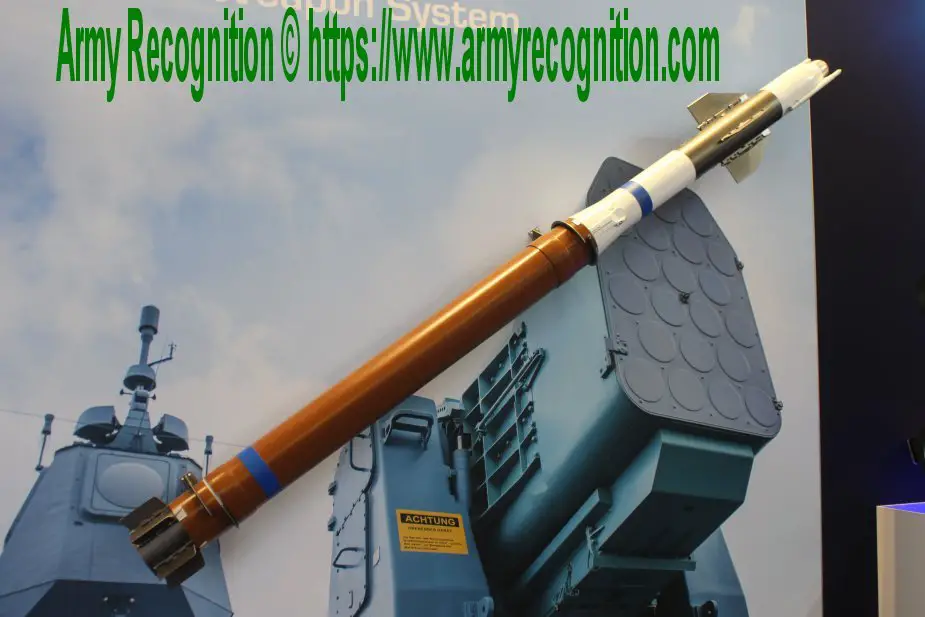According to information published by the German MoD on November 10, 2022, the German Navy receives the first 600 Rolling Airframe Missiles Block 2B for its frigates.
Follow Navy Recognition on Google News at this link
 RIM-116 Rolling Airframe Missile (Picture source: Army Recognition)
RIM-116 Rolling Airframe Missile (Picture source: Army Recognition)
The RIM-116 Rolling Airframe Missile (RAM) is a small, lightweight, infrared-homing surface-to-air missile in use by the German, Japanese, Greek, Turkish, South Korean, Saudi Arabian, Egyptian, Mexican, UAE, and U.S. Navies.
It was originally intended and used primarily as a point-defense weapon against anti-ship missiles. As its name indicates, RAM rolls as it flies. The missile must roll during flight because the RF tracking system uses a two-antenna interferometer that can measure phase interference of the electromagnetic wave in one plane only.
The Rolling Airframe Missiles, together with the Mk 49 Guided Missile Launching System (GMLS) and support equipment, make up the RAM Mk 31 Guided Missile Weapon System (GMWS).
The Mk-144 Guided Missile Launcher (GML) unit weighs 5,777 kilograms (12,736 lb) and stores 21 missiles. The original weapon cannot employ its own sensors prior to firing, so it must be integrated with a ship's combat system, which directs the launcher at targets.
On U.S. ships, it is integrated with the AN/SWY-2 Ship Defense Surface Missile System (SDSMS) and Ship Self-Defense System (SSDS) Mk 1 or Mk 2-based combat systems.
SeaRAM, a launcher variant equipped with independent sensors derived from the Vulcan Phalanx CIWS, is being installed on Littoral Combat Ships and certain Arleigh Burke-class destroyers.
The Block 2 (RIM-116C) is an upgraded version of the RAM missile aimed at more effectively countering more maneuverable anti-ship missiles through a four-axis independent control actuator system, increased rocket motor capability, an improved passive radio frequency seeker and upgraded components of the infrared seeker, and advanced kinematics.



